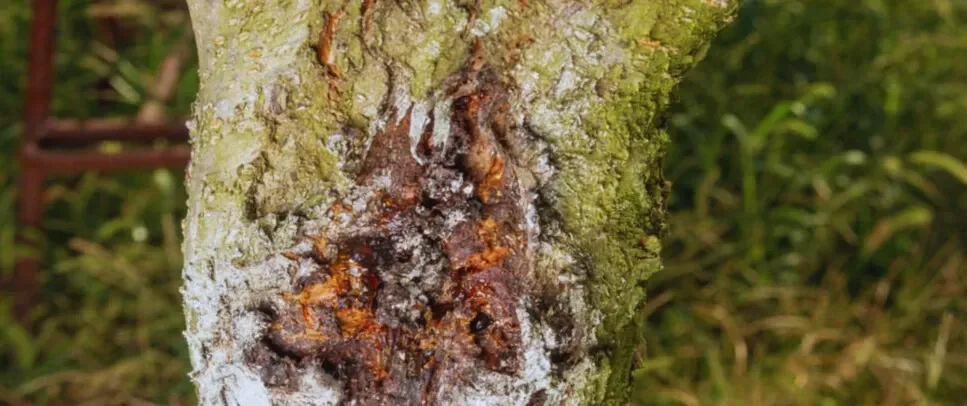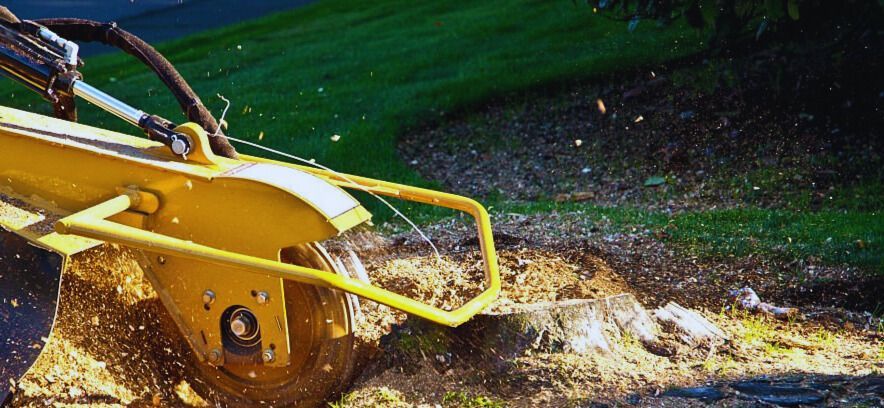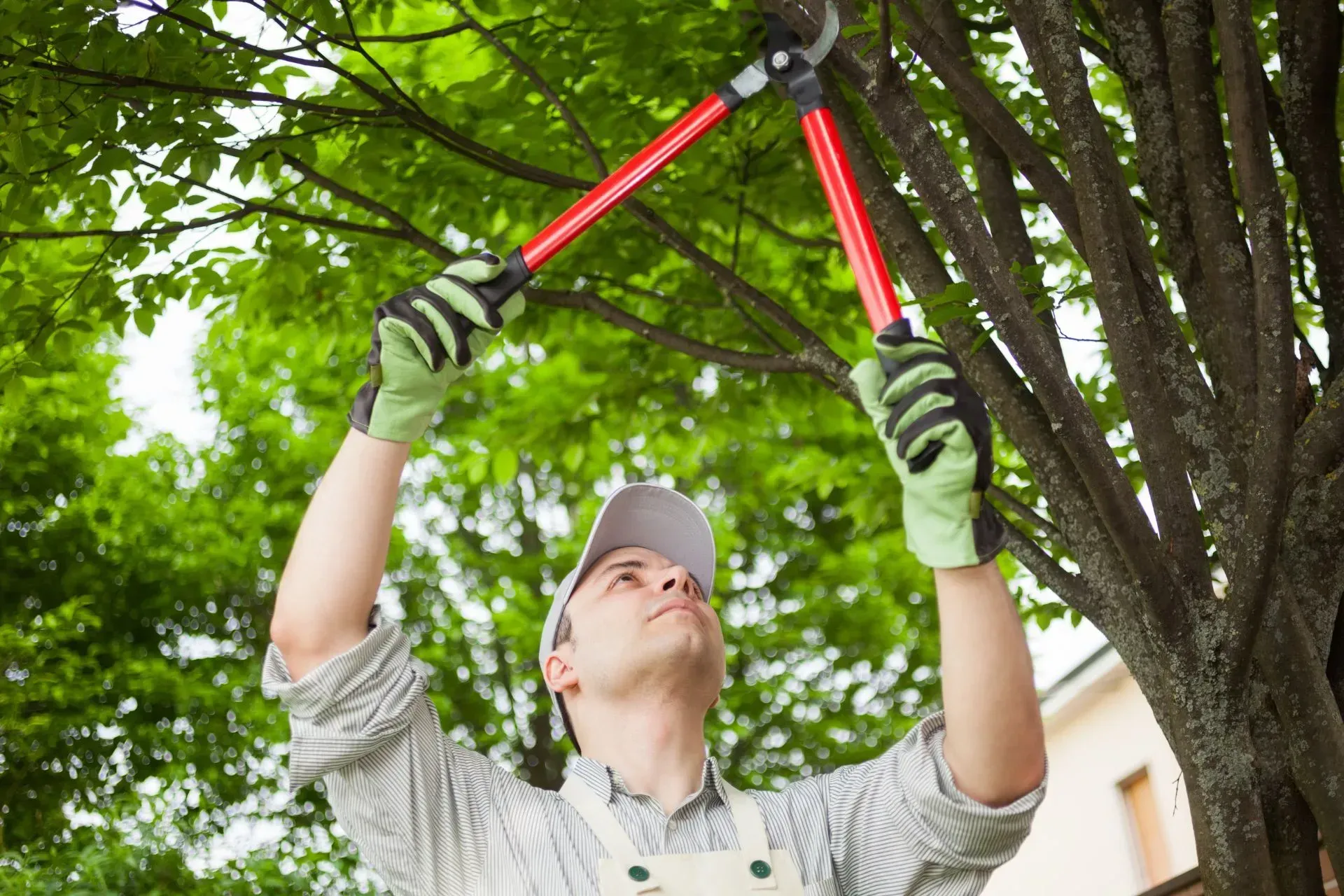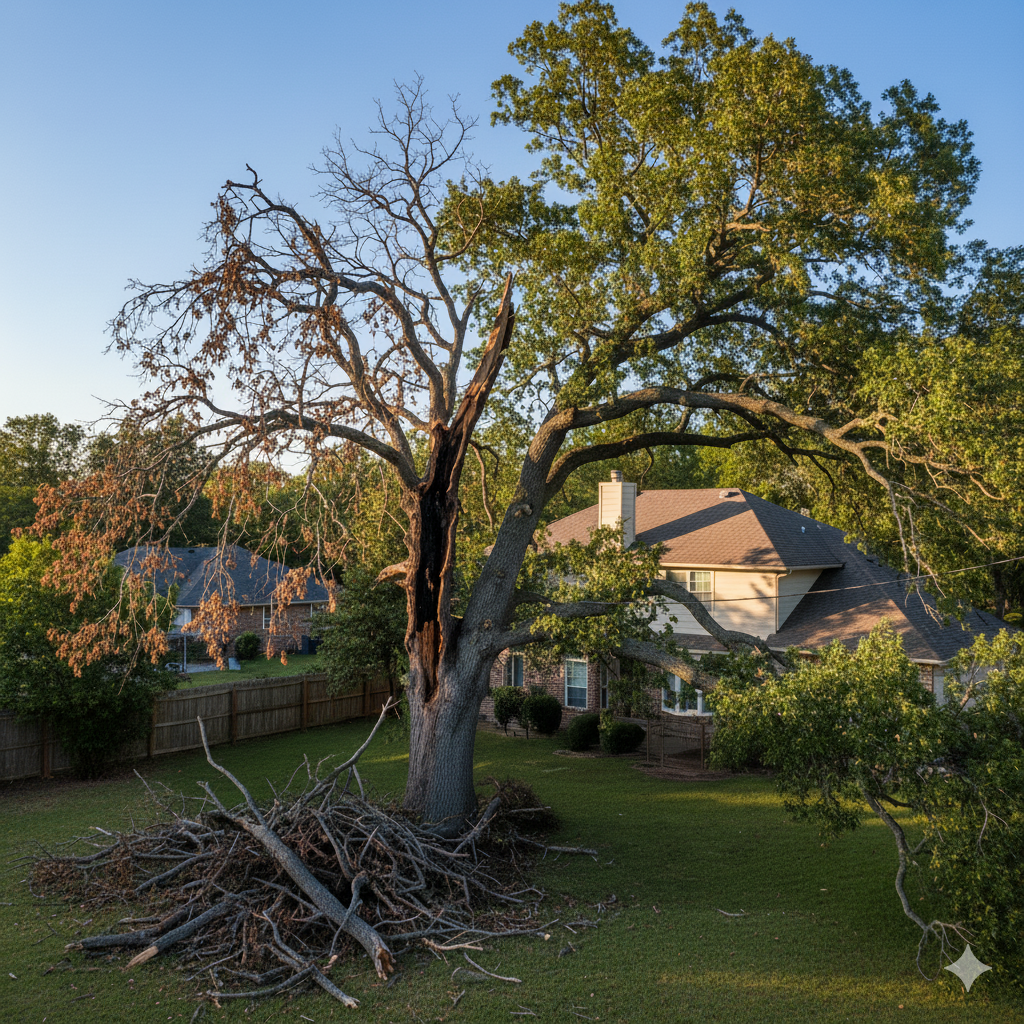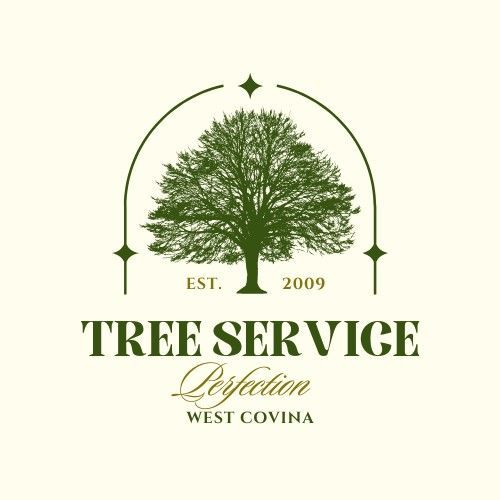The Essential Guide to Regular Tree Care and Maintenance
Maintaining your trees isn’t just a chore—it’s a commitment to the health, beauty, and safety of your environment. Whether in a lush suburban yard or an urban space surrounded by concrete, trees need care to thrive. This guide walks you through everything you need to know about regular tree care and maintenance, ensuring that your green investments live long and prosper.
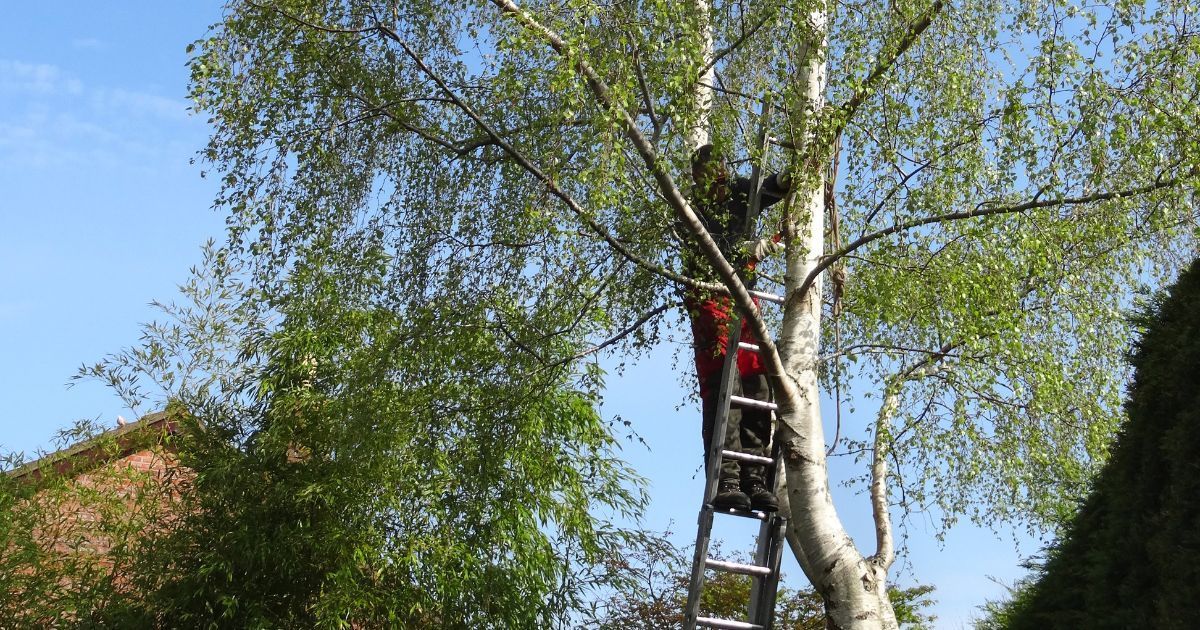
Tree Care Basics
Trees, often called the lungs of the Earth, are living organisms with complex needs. At their core, they consist of roots, trunks, branches, and leaves—all working in tandem through processes like photosynthesis and transpiration. Understanding how each part contributes to the overall health of the tree is the first step in developing a proactive care routine.
- Roots absorb water and nutrients.
- Trunks support and transport.
- Leaves produce energy through sunlight.
Healthy soil and proper moisture levels are essential foundations. For young trees especially, proper staking and protection from pests are crucial in the early years.
Why Regular Tree Maintenance Matters
Routine care isn’t a luxury—it’s a necessity. Proper tree maintenance:
- Enhances tree lifespan.
- Reduces risks of property damage from falling branches.
- Increases property value through enhanced curb appeal.
- Promotes ecological health, including cleaner air and reduced soil erosion.
Ignoring tree health can lead to dangerous situations like weak limbs or diseased trunks, which pose safety hazards during storms or high winds.
Signs of an Unhealthy Tree
Catching issues early can mean the difference between a saved tree and an emergency removal. Look out for:
- Wilting leaves, even in moist soil.
- Leaf discoloration like yellowing or dark spots.
- Fungal growths around the base or on branches.
- Cracks or splits in bark.
- Dead branches or unusual thinning.
Sometimes, symptoms may be subtle. Regular inspections help detect problems before they escalate.
Common Tree Diseases and Pests
From bacterial blights to invasive insects, trees face a barrage of threats. Popular culprits include:
- Aphids
- Emerald Ash Borer
- Anthracnose
- Powdery Mildew
Early detection is key. Applying eco-friendly pesticides or calling in professionals for evaluation can prevent widespread damage.
Seasonal Tree Maintenance Checklist
Tree care varies with the seasons. Here’s a breakdown:
Season Tasks
Spring Inspect for damage, Fertilize, Light pruning
Summer Deep watering, Pest control
Fall Mulching, Final pruning
Winter Dormant pruning, Cabling & bracing
Adapt your care strategy as the seasons change to maintain peak tree health year-round.
Tree Pruning Techniques
Pruning encourages healthy growth and eliminates risks. Common techniques include:
- Crown thinning: Reduces wind resistance.
- Deadwooding: Removes dead branches.
- Crown raising: Clears space for walkways and vehicles.
Avoid over-pruning—doing so can stress your tree or invite disease.
Tree Trimming vs. Pruning
While used interchangeably, they serve different purposes:
- Pruning is focused on tree health and structure.
- Trimming is about aesthetics and shaping.
Timing and approach differ based on your objective. For a full-service approach, consider hiring a Tree Service.
Best Time to Trim or Prune
The dormant season—late winter to early spring—is ideal. It limits stress and minimizes sap loss. For flowering trees, prune post-bloom to encourage vibrant regrowth.
Tools Needed for Tree Care
Here’s your essential toolkit:
- Hand pruners – Ideal for small twigs.
- Loppers – For medium branches.
- Pole saws – Reach higher limbs.
- Chainsaws – For major cuts.
- Safety gear – Gloves, goggles, helmets.
Proper tool care also extends their lifespan and maintains efficiency.
DIY Tree Care Tips
Caring for trees doesn't always require professional intervention—especially when you're attentive, well-prepared, and proactive. There are many things homeowners can do themselves to keep trees healthy without compromising safety or effectiveness.
Keep these essential tips in mind:
- Monitor regularly: Look for signs of disease or stress like curling leaves, oozing bark, or ant infestations.
- Prune safely: Use clean, sharp tools and make clean cuts just outside the branch collar. Never remove more than 25% of the tree's canopy in a single season.
- Water wisely: Use slow, deep watering techniques early in the morning or late evening.
- Mulch properly: Add 2–4 inches of organic mulch around the tree's base but keep it away from direct trunk contact to avoid rot.
- Avoid mechanical injury: Keep lawnmowers and weed trimmers away from the trunk. Damage can lead to infection or decay.
Caution: Anything involving heights, chainsaws, or major structural work should be left to certified arborists. Tree care can become hazardous quickly.
When to Hire a Professional Arborist
Some tasks are best left to the experts, especially those involving large trees or potential safety hazards. Certified arborists bring specialized knowledge in tree biology, disease diagnosis, and safe pruning techniques.
Call a professional arborist when:
- A tree is leaning or cracking
- There’s been significant storm damage
- You need disease diagnosis
- You’re planning construction near mature trees
- You’re unsure how to prune safely or correctly
Choosing an ISA-certified arborist ensures they meet the highest standards of expertise and ethical tree care. Don’t wait until it’s too late—early professional intervention often saves trees and prevents costly emergencies.
Benefits of Professional Tree Service
While DIY tree maintenance has its place, professional tree services bring unmatched advantages, especially for homeowners who lack the time, tools, or expertise.
Using a trusted Tree Service means:
- Expert diagnosis of diseases and pests
- Safe and strategic pruning without damaging the tree
- Proper equipment use and reduced liability
- Long-term tree health planning
- Quick emergency response for fallen or dangerous limbs
Their insights into soil chemistry, growth patterns, and climate-specific species management often make the difference between thriving trees and a struggling landscape.
Tree Fertilization Methods
Fertilization replenishes essential nutrients that trees may lack due to poor soil or competition from turfgrass. Unlike turf, trees grow slowly and require different nutrients in different seasons.
Effective fertilization strategies:
- Slow-release formulas: Feed trees gradually without burning roots.
- Organic compost: Boosts soil microbes and moisture retention.
- Deep-root injection: Delivers nutrients directly to root zones.
Over-fertilizing can harm more than help. Soil testing beforehand is always advised to avoid nutrient imbalances.
Watering Practices for Trees
Watering trees isn’t just about frequency—it’s about depth and timing.
Key watering principles:
- Deep soaking: Water should reach 12–18 inches below the surface.
- Infrequent but thorough: One deep soak is better than frequent shallow watering.
- Early morning watering: Prevents evaporation and fungal issues.
- Young vs. mature trees: Young trees need consistent moisture; mature ones are more drought-tolerant but still need care during dry spells.
Mulching supports these efforts by retaining moisture and reducing evaporation.
Soil Testing and Aeration
Trees rely on their soil environment for nutrients, water, and oxygen. Compact or poor-quality soil can choke roots and invite disease.
Soil testing benefits:
- Identifies nutrient deficiencies or pH imbalances
- Informs fertilization plans
- Detects contaminants or toxic buildup
Aeration relieves compaction, enhances oxygen flow, and improves root growth. You can do this with manual tools or hire a pro for deep soil aeration if the compaction is severe.
Mulching for Tree Health
Mulch does far more than beautify your yard—it’s a protective blanket that retains moisture, prevents weeds, and improves soil quality.
Best practices for mulching:
- Use organic mulch like wood chips or bark.
- Apply 2–4 inches deep, but avoid "volcano mulching" where mulch piles against the trunk.
- Refresh mulch annually, especially after heavy rain or snowmelt.
Mulching mimics the natural forest floor, creating an ideal environment for roots to thrive.
Root Protection Strategies
A tree’s roots can stretch far beyond the canopy. They’re often damaged unknowingly during construction, digging, or even landscaping.
To protect tree roots:
- Avoid compacting soil around the root zone.
- Install barriers during construction projects.
- Don't cut roots unless absolutely necessary—and always consult an arborist if you must.
Healthy roots mean a stable, healthy tree. Once damaged, roots can be hard to repair, so prevention is key.
Tree Cabling and Bracing
Some trees grow with structural defects, like V-shaped crotches or split limbs. Tree cabling and bracing can provide the necessary support to extend their life and reduce risk.
Cabling involves high-strength steel cables secured between major branches to reduce stress from wind or heavy foliage.
Bracing uses rods or bolts inside the trunk to reinforce weak points.
This type of work should always be handled by a certified professional due to the complexity and precision required.
Tree Removal: When It's Necessary
Tree removal is a last resort. However, there are times when it's the safest or only option.
Indicators that removal is needed:
- A tree is dead or dying
- It leans dangerously toward structures
- Root systems have lifted sidewalks or foundations
- There's extensive pest or disease damage
- It poses a fire hazard
Always get a second opinion before removing a tree. Arborists may offer alternatives like trimming, cabling, or treatment that can preserve it.
Planting New Trees Correctly
Planting a new tree may seem simple, but mistakes at this stage can affect it for decades.
Tips for proper planting:
- Dig a hole 2–3 times wider than the root ball.
- The root flare should be just above soil level.
- Use native soil when backfilling.
- Water thoroughly and mulch appropriately.
Give young trees the best chance at thriving by avoiding root girdling or planting too deep.
Tree Species Selection
Choosing the right species is half the battle in long-term tree care.
Considerations when choosing a tree:
- Local climate and hardiness zone
- Soil type and drainage capacity
- Mature height and spread
- Sunlight requirements
- Pest resistance
Your local extension office or tree service professional can help match the right tree to your landscape needs.
Caring for Young Trees
Young trees need more attention than mature ones.
Steps to nurture young trees:
- Water regularly, especially in the first 2 years
- Stake if necessary, but remove stakes within a year
- Protect from animals using tree guards
- Monitor for early signs of disease or pests
Don’t fertilize too early. Allow roots to establish first.
Caring for Mature Trees
As trees age, their needs shift. Focus shifts to structural integrity, pest management, and soil health.
- Inspect annually for cracks, hollow trunks, or dead limbs.
- Prune carefully to reduce weight on old branches.
- Fertilize selectively if symptoms of deficiency appear.
Mature trees are valuable—financially and environmentally—so preserve them with patience and care.
Tree Care in Urban Environments
Urban landscapes can be particularly harsh on trees. Between compacted soils, limited root space, pollution, and heat, city trees face unique challenges that suburban or rural trees don’t.
Challenges of urban tree care include:
- Soil compaction from foot traffic or vehicles
- Air pollution and particulate matter clogging stomata
- Restricted root zones due to sidewalks or buildings
- Vandalism or physical damage
To mitigate these challenges:
- Use structural soil and soil cells for root space
- Apply regular mulching to protect from temperature swings
- Plant pollution-tolerant species like Ginkgo, London Plane, or Elm
- Install guards to protect trunks in high-traffic areas
Urban trees are more than just decoration—they reduce the urban heat island effect, improve air quality, and enhance mental well-being for residents.
The Role of Weather in Tree Health
Weather plays a huge role in the life of a tree. Sudden frost, high winds, or prolonged droughts can severely impact growth, structure, and overall health.
Weather-related tree stress includes:
- Drought stress leading to leaf scorch and early drop
- Heavy snow or ice breaking limbs
- Wind damage uprooting or snapping trunks
- Flooding causing root suffocation
To help trees cope:
- Water deeply before anticipated droughts
- Prune weak or dead limbs before winter
- Use cabling and bracing for trees prone to wind damage
- Avoid planting in flood-prone areas without proper drainage
Climate-adaptive landscaping ensures your trees are prepared for a changing environment.
Tree Care Myths Debunked
Let’s clear up some common misconceptions about tree care that can actually do more harm than good.
Myth: Topping a tree controls its size.
Truth: Topping is harmful and leads to weak regrowth. Proper pruning is better.
Myth: Mulch should be piled against the trunk.
Truth: This invites rot and pests. Always keep mulch a few inches away from the trunk base.
Myth: All tree wounds need wound paint.
Truth: Most modern arborists agree that trees heal best naturally—painting often traps moisture and bacteria.
Myth: Trees don't need care once established.
Truth: Mature trees still need attention, particularly for pests, pruning, and structural integrity.
Stay informed—outdated practices can quickly undermine years of tree growth.
How Tree Care Enhances Curb Appeal
Well-maintained trees not only keep your landscape lush—they can boost property value by up to 20%, according to the Arbor Day Foundation. Trees frame your home, create welcoming spaces, and communicate care and stability.
Ways tree care improves curb appeal:
- Aesthetic shaping enhances symmetry and balance
- Seasonal blooms or foliage colors add interest
- Healthy trees make yards appear larger and greener
- Well-pruned trees create sightlines and openness
Whether you’re planning to sell your home or just beautify your space, tree care is one of the most cost-effective enhancements you can make.
Eco-Friendly Tree Maintenance Tips
Sustainable tree care benefits both your yard and the environment. Here are easy ways to reduce your ecological footprint while still supporting healthy tree growth:
- Compost fallen leaves instead of bagging them
- Choose native species that need less water and pest control
- Use chemical-free pest solutions like neem oil or insecticidal soap
- Apply drip irrigation systems to conserve water
- Use recycled mulch or fallen branches as garden mulch
Practicing eco-friendly habits helps preserve local ecosystems and ensures your landscape contributes to a healthier planet.
Emergency Tree Services
Storms can wreak havoc on your trees, leaving behind broken branches, leaning trunks, or entire trees blocking driveways. In such cases, you need emergency tree service—fast.
Signs you need urgent help:
- Tree or large limbs have fallen
- Tree is resting on power lines
- A trunk is visibly split or cracked
- Roots are lifting from the ground
Don’t attempt removal yourself—storm-damaged trees are unpredictable and dangerous. Contact a certified Tree Service immediately. They have the equipment and training to remove hazardous trees safely and efficiently.
How to Contact Tree Experts
Need help identifying a disease, trimming a large limb, or designing a tree care plan? It’s simple to reach out.
Here’s how:
- Call your local arborist or tree care company
- Visit their website to request a free quote or consultation
- In emergencies, look for 24/7 response services
- Choose certified professionals with insurance and credentials
Start here: Contact Covina Tree Service for reliable, professional assistance. Your trees—and your property—deserve it.
FAQs
How often should trees be inspected?
Ideally, trees should be inspected at least once a year by a certified arborist to catch early signs of decay, disease, or instability.
Are all tree fertilizers the same?
No. Different trees have different needs. It’s best to conduct a soil test and consult with an expert before applying fertilizer.
Can trees recover from bark damage?
Minor wounds can heal over time, but large or deep bark damage may compromise tree health. Avoid wounding trees and monitor healing.
What is root girdling, and how do I prevent it?
Root girdling happens when roots wrap around the trunk, eventually choking the tree. Plant trees correctly and check root systems in container-grown specimens.
Do all trees need pruning?
Yes, though the amount and timing vary by species. Regular pruning removes hazards and shapes healthy growth.
Is it okay to trim trees in the summer?
Light trimming is fine, but major pruning should be done during the dormant season to reduce stress and minimize pest exposure.
Conclusion
Regular tree care and maintenance are not just about appearances—they’re about sustainability, safety, and stewardship. Whether you're tending to a single sapling or managing a mini-forest, the rewards of thoughtful tree care are immense and long-lasting.
Your trees are living investments. Nurture them, and they’ll give back in beauty, shade, cleaner air, and higher property value. From mulching and pruning to emergency storm response and tree planting, you now have a roadmap to keep your green companions thriving.
Still unsure where to start? Don’t hesitate to Contact Covina Tree Service for expert guidance and personalized support.
Links
- Tree Service → https://www.covinatreeservice.com/
- Contact → https://www.covinatreeservice.com/contact
